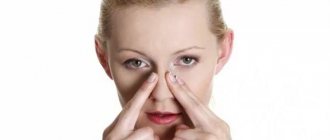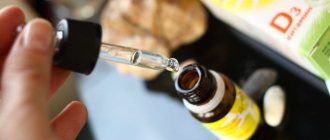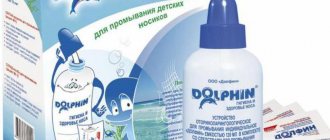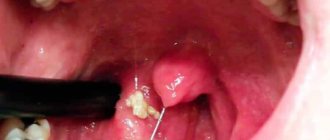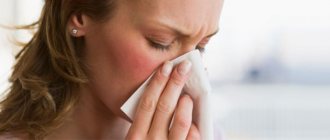Cause: infectious diseases
Congestion in the throat is the result of the penetration of various foreign substances into the airways, and especially pathogens of various infections, which include bacteria, viruses, as well as protozoa and fungi. All these “uninvited guests” can take up residence in our body for a short time, for example, during ARVI. These viruses, as well as the causative agent of influenza, have an affinity for glandular tissue, which is responsible for the “production” of tracheobronchial secretions.
The inflammatory foci that form in this case lead to excessive mucus secretion. The reason is clear: more immune cells are needed to fight infection. In addition, during inflammation, there is hyperemia of the mucous membrane, and its swelling occurs due to blood flow to the site of inflammation. This hyperemia also adds unpleasant sensations, which manifest themselves in the form of soreness, soreness, rawness and “scratching”, as well as classic pain when swallowing.
This mucus must be constantly removed from the respiratory tract, since congestion leads to the addition of a secondary bacterial infection. In this case, the mucus begins to fester, and symptoms of general intoxication occur. These include weakness and weakness, a rise in temperature and the appearance of a cough with the release of wet and purulent sputum. It is these symptoms that indicate that antibiotic treatment should be started.
It also causes a sore throat from other infectious diseases.
The list of them is quite wide, but the following are most often to blame:
- Chronic rhinitis, including nasal polyposis and atrophic rhinitis.
- Acute and chronic tonsillitis.
- Acute and chronic sinusitis.
- Catarrhal pharyngitis. With it, mucus flows down and congestion forms in the throat. If pharyngitis is combined with bronchitis, then the accumulation of infectious mucus occurs on both sides - from above from the pharynx and from below from the bronchi.
- Acute and chronic laryngitis.
In addition, we must not forget about chronic bronchitis and tracheobronchitis and pneumonia, although, of course, pneumonia occurs much less frequently than exacerbations of chronic diseases of the ENT organs.
Among the special reasons for which congestion occurs in the throat, diphtheria of the pharynx should be mentioned. It can be fatal, not because the accumulation of mucus is to blame, but because toxic swelling of the larynx occurs, which is called diphtheria croup. In this case, at first a hoarse and barking voice appears, the general condition sharply worsens, and large whitish-gray films with clear contours are found in the pharynx and deeper, which are very difficult to remove, leaving bleeding ulcers.
If anti-diphtheria serum is not administered, a person may die from suffocation due to symptoms of acute respiratory failure.
In addition to infectious causes, a wide variety of other diseases and conditions can lead to throat congestion.
Jala-neti
Benefit
The procedure cleanses the nasal passages - the sense of smell is heightened, brain activity is stimulated, mental tone and memory are improved. This is also an excellent prevention of sinusitis and sinusitis.
Preparation
All cleansing procedures are recommended to be carried out in the morning and on an empty stomach. Prepare a solution of salt water: add 1/5 tsp to a glass of water boiled and cooled to room temperature. table salt. The water should not be too cold or salty - it can become painful. In the East they say that the water for jala neti should be slightly saltier than tears, but not as salty as sea water.
Procedure
There are two ways to cleanse: with a nasal rinse teapot (neti pot) and without it.
Method No. 1 (with a teapot)
- Lean forward and turn your head slightly.
- Pour water from the kettle into one nostril and out through the other.
- Clean the other nostril in the same way.
- At the end, do kapalabhati - powerful and short inhalations and exhalations - to get rid of the remaining water.
If you do not have a special teapot, use any convenient vessel with a spout.
Method No. 2 (without a teapot)
- Place the solution into your mouth.
- Lean forward, turn your head upside down and push the solution into the nasal cavity.
- Exhale sharply, as if sneezing, through your nose. Water should splash from the nose.
- Repeat the procedure several times until the water runs out.
- At the end, do kapalabhati - powerful and short inhalations and exhalations - to get rid of the remaining water.
If you have congestion in your sinuses, then after the procedure, bright lemon-colored mucus may flow out of your nose during the day.
Contraindications
The practice is not recommended for inflammatory and purulent processes in the sinuses of the nose and ear, since the infection can enter through the Eustachian tube into the inner ear.
After practice, do not immediately go outside - this can provoke inflammation of the maxillary sinuses, middle ear, and larynx.
Non-infectious causes
These include, for example, occupational diseases in which safety precautions regarding respiratory protection are violated. If industrial dust, smoke, or aerosols enter the lungs, an acute reaction of the respiratory tract to the introduction of microparticles may occur.
A large amount of mucus occurs in acute allergic rhinitis and Quincke's edema. This condition occurs as a reaction to food or respiratory allergens, flowering grasses and birch (hay fever).
Also, congestion in the throat can occur due to space-occupying formations, for example, malignant or benign tumors, hemangiomas, or due to enlargement of the mediastinal lymph nodes, for example, with sarcoidosis. According to modern data, in every 30th patient, an accumulation of mucus in the throat is a symptom of a neoplasm or tumor.
Tobacco smoke, inhaled in excessive quantities, can also irritate the mucous membrane of the respiratory tract and cause this unpleasant symptom.
In young children, as well as in mentally ill people, the cause of congestion and even suffocation may be a foreign body that gets into the respiratory tract during play or eating.
LiveInternetLiveInternet
Quote from message Makosh311
Read in full In your quotation book or community!
Magic points for healing the nasopharynx
As you know, acupressure is widely used in the East.
By pressing on various points, we are able to control the flow of energy inside our body, which gives a powerful healing effect.
There are several special points that heal the nasopharynx.
Three of them are located on the upper palate; to activate them, special positions of the tongue are used, which include certain closures of energy channels (mudra).
Air point (vayu-nabhi-mudra)
Touch your tongue above the upper teeth (approximately at the level of the middle of the upper lip) and hold it in this position.
Mudra helps to concentrate, enhances energy circulation, eliminates congestion in the nasopharynx, helps in the treatment of respiratory diseases, and heals the liver.
Improves the functioning of the body's most important systems: the immune and central nervous systems. Helps overcome laziness, inertia, depression.
Point of fire (agni nabhi mudra)
Touch your tongue to the roof of your upper palate.
This mudra has a warming effect, improves vision, helps harmonize digestion, strengthen the immune system, and improve memory. It cleanses and rejuvenates all tissues of the body.
Water point (jala nabhi mudra or apas nabhi mudra)
Between the hard and soft palate (the very beginning of the soft palate).
Improves digestion, condition of the throat and teeth, enhances internal energy. It is used in the treatment of cardiovascular and endocrine diseases, injuries, metabolic disorders, hypertension, and diabetes.
After performing each asana or block of asanas, you need to sit motionless for some time with a vertical, straight spine, waiting for the pranic impulse to pass through the body. If the sensation does not appear, you should run your tongue across the palate several times from the upper teeth to the pharynx and back, that is, perform all three versions of Nabhi Mudra in sequence, one of which will certainly “work”, indicating the flow of power of which element and which The body prefers to use the chain of energy channels for self-regulation in this particular case. Nabhi Mudra in the Vayu Nabhi Mudra version is a necessary element of the practice of all asanas, which is of great importance for giving them the quality of psychoenergetic practices. In addition, studying Nabha Mudra allows the practitioner to actually feel the pranic flows in the body.
There are also other points that are used to tonify the throat and nasopharynx , to control the internal state of the body.
Ether point (khechari mudra or akasha mudra)
Stretch the tip of your tongue even further back and up, towards the throat, as if trying to close your throat with your tongue. Hold this position for 15-30 seconds, breathe through your nose. Finally, relax your throat and tongue.
This mudra heals the throat and nasopharynx, relieves stress and internal tension, develops clarity and positive thinking, and destroys destructive programs in the subconscious. Develops intuition, promotes detoxification of the body, regulates cellular metabolism, helps overcome chronic fatigue syndrome.
Earth point (prithivi mudra)
Press the tip of your tongue firmly against the base of your lower teeth from the inside. Hold this position for 15-30 seconds and then relax. Breathe through your nose.
This mudra heals the nasopharynx, calms well, and gives a feeling of internal support and “grounding.” Supports osteoporosis, arthritis, diseases of the skin, teeth, hair, nails and joints, develops strength and endurance. Helps overcome apathy and despondency, improves mood.
source
Runny nose
hi-shi - harmonizing;
ku-san - exciting;
fu-san - calming;
ni-shi - special.
All points are symmetrical. Acupressure is carried out in a light form with the tips of the index fingers of both hands synchronously on both sides for 1 minute.
The sequence is 1, 2, 3, 4.
Acupressure helps as a preventative preventive measure.
Series of messages “ears, nose, throat”: Part 1 - If your ears hurt... Part 2 - Compresses for bruises, sore throats and other tips. ... Part 39 - Traditional treatment of the thyroid gland Part 40 - How to rinse your nose with a runny nose Part 41 - Magic points for healing the nasopharynx Part 42 - Gargles for a sore throat
Which doctor should I contact if I have a stuffy throat?
In the event that this condition occurs for the first time, against the background of high fever, sore throat and catarrhal manifestations, you need to call a therapist at home or consult an ENT doctor. If the period of mucus accumulation coincides with the spring flowering of herbs, then you need to consult an allergist.
If throat congestion is associated with professional activity, you will need to see an occupational pathologist or pulmonologist. Finally, if this symptom bothers you constantly, against the background of a normal temperature, you need to contact a gastroenterologist and pulmonologist. FGS and bronchoscopy may be necessary to exclude the occurrence of a tumor.
What will help strengthen your immune defense?
In order for the nasopharyngeal mucosa to maintain its barrier properties, it is important to maintain its health. This can be done using accessible means.
- The main enemy of the mucous membrane is dry air. Special devices - humidifiers - will help solve this problem. If they are not there, you can use a simple proven method to humidify the air - place deep containers with warm water around the room.
- To improve the condition of the mucous membranes, you need to clean the air from germs and dust. Regular ventilation and daily wet cleaning will help to do this.
- Surprisingly, but true: indoor plants also have a positive effect on strengthening the local immunity of the nasopharynx. The thing is that they secrete phytoncides - biologically active substances that suppress the growth of pathogenic microorganisms.
To ensure sufficient strengthening of the nasopharyngeal mucosa and restore its functions, Derinat can be used during the flu and cold season. Nasal drops are used to protect children from colds from the first day of life; the spray is suitable for older children, teenagers and adults. The product has a complex effect:
- destroys pathogenic viruses that cause influenza and ARVI,
- due to the reparative effect, restores the health of the mucous membrane,
- strengthens the local immunity of the nasopharynx and increases the overall level of immune protection.
If you regularly use a good drug for immunity, you can significantly reduce the risk of getting sick.
Treatment
What to do if your throat is stuffy? First of all, in case of breathing problems (shortness of breath, suffocation), you must urgently call an ambulance. If there is no threat to life, but there is thick and unpleasant sputum, you need to consult a doctor about what medications to take and what actions to take to avoid mistakes.
Medicines and antibiotics
Antibiotics should only be prescribed by a doctor if there are signs of bacterial inflammation: the appearance of purulent plaque and sputum, fever and deterioration in health.
Self-medication with antibiotics is dangerous - they do not act on viruses, but they can cause intestinal dysbiosis, which manifests itself as diarrhea and bloating. It is better to rinse and inhale on your own, and in case of a viral infection, take antiviral drugs and agents to enhance interferon production.
Rinse
These procedures are carried out to relieve hyperemia of the pharynx and inflammation. They are used for pharyngitis and tonsillitis, and for various odontogenic inflammatory processes. Most often they rinse with soda and salt, which relieves swelling, calendula tincture, as well as antiseptics - Chlorhexidine, Miramistin, Furacillin solution. In the event that the congestion in the throat is clearly deeper, for example, in the larynx area, inhalations are performed.
If your child has a stuffy throat
In this case, you need to contact a pediatrician, and if the baby suffocates while playing, you need to shake him by the legs (holding him upside down) and beat him on the back. There is a high chance that the foreign body will be expelled by coughing naturally.
But most often, throat congestion in children is the result of reduced immunity, and occurs twice a year, in spring and autumn, when the body is hypothermic. In this case, parents need to pay significant attention not only to the treatment of the underlying disease, but also to prevention.
Preventive measures
The main preventive measures are as follows:
- treatment of chronic foci of infection of the ENT organs, diseases of the lungs, and the oral cavity;
- hardening and increasing immunity - consuming vitamins, trace elements and minerals, taking adaptogens, normalizing nutrition and daily routine;
- stopping smoking, and in the presence of harmful occupational factors, using personal protective equipment;
- undergoing medical examinations and medical examinations, which can identify specific markers of cancer, and taking timely measures.
In conclusion, we can say that such an unpleasant symptom as a feeling of stuffiness in the pharynx and throat, despite its frequent occurrence, is rarely the reason for a visit to the doctor, especially against the background of normal health and preserved performance. By addressing this symptom more seriously, many complications can be avoided in the future.
Author: Stanislav Pogrebnoy, doctor, especially for Moylor.ru

